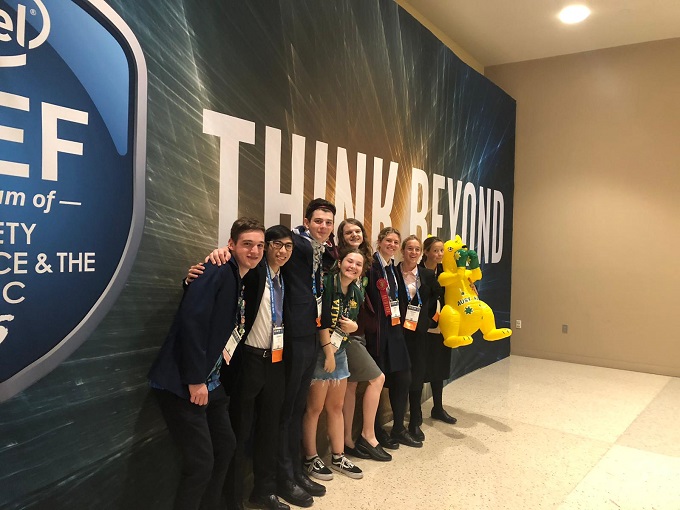High school students innovate International Science and Engineering Fair

Australian high school students Lucy Lake, Mitchell Torok, Ivy Brain, Macinley Butson and Callum Predavec have received multiple prizes at the Intel International Science and Engineering Fair (ISEF) in Phoenix, Arizona alongside over 1800 high school students from 75 countries.

All students were finalists at the national 2019 BHP Foundation Science and Engineering Awards, a partnership between the BHP Foundation, CSIRO and the Australian Science Teachers Association.
Barker College student Lucy Lake received the Engineering Mechanics Second Award and the Patent and Trademark Office Society Award for her project Phase 3.
The project was a new design of rowing oars that mimic the tubercles on the edge of a whale flipper which reduces aerodynamic drag and slippage on the blade through the water.
Rosny College student Mitchell Torok and Launceston College student Ivy Brain received the Embedded Systems Fourth Award for their project, aWear which is a watch for people living in residential aged care or assisted living.
 The watch features a button to send an alert and an accelerometer to facilitate fall detection and is connected to a database that can SMS nursing staff about residents’ status and location in real-time.
The watch features a button to send an alert and an accelerometer to facilitate fall detection and is connected to a database that can SMS nursing staff about residents’ status and location in real-time.
Illawarra Grammar School student Macinley Butson received the Translational Medical Science Second Award and the China Association for Science and Technology (CAST) Award for her SMART System project.
The SMART System incorporates the use of two devices, the SMART Armour and SMART Magnetic Array to reduce collateral tissue damage during radiation therapy.
The SMART Magnet deflects the electron contamination away from the patient’s skin towards the SMART Armour, which then absorbs it.
This prevents the patient’s skin from burning and also reduces the patient’s risk of developing another form of cancer in the long-term.
Mosman High School student Callum Predavec received the Mathematics Fourth Award for his project, Planetary Transfer Calculator which calculates the distance between any planet, moon or star in the solar system.

It is also web browser based making it more accessible to people interested in space.
CSIRO Education and Outreach Director Mary Mulcahy said Australian high school students had been recognised by Intel ISEF for their innovative projects over the last few years.
“The students in the Australian delegation have all shown outstanding commitment to their projects and it is an incredible achievement to have their work showcased alongside students from around the world,” Ms Mulcahy said.
“I have no doubt we will see great things from all of these students in the years to come.”
BHP Foundation Chief Executive James Ensor said the success of local students on an international stage was testament to their passion for STEM.
“Improving science, technology, engineering and maths outcomes for young people is at the heart of the Foundation’s commitment to supporting innovative STEM programs in Australia,” Mr Ensor said.
“We know there’s a clear link between science, technology, engineering and math and our future prosperity so we’re delighted to see this next generation of talented Australians recognised for their passion and commitment to solving some of the world’s big challenges.”
The BHP Foundation and Intel Foundation provide support for the BHP Foundation Science and Engineering Awards Australian delegation attending the fair.
For more information go to BHP Foundation Science & Engineering Awards .







